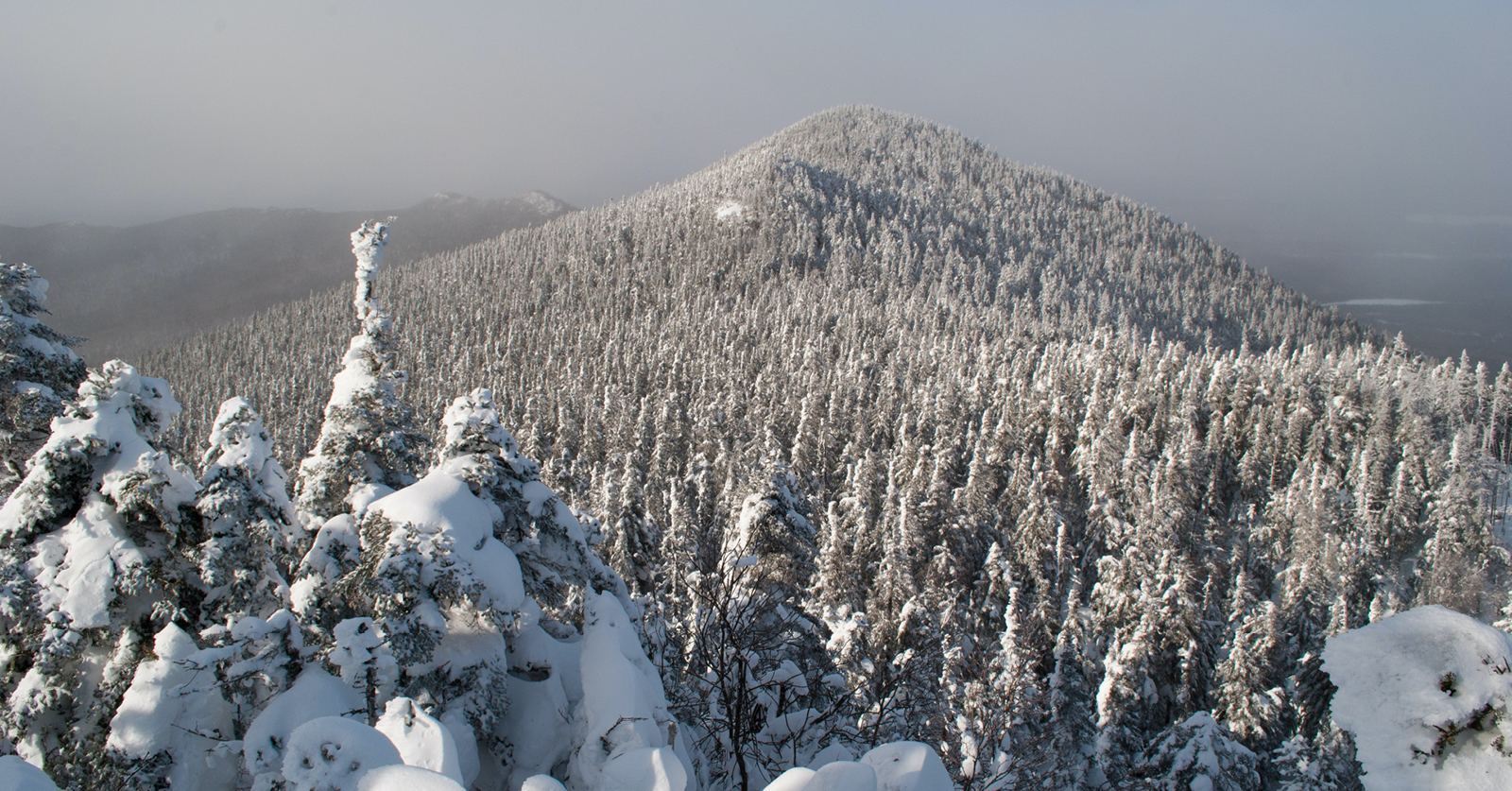3 Great Backpacks for Your Trip
Outdoor Activities | August 1, 2025
SAIL
October 8, 2021

One of winter’s greatest pleasures – as well as one of the most accessible ones – is, without a doubt, winter hiking! Whether it be in snowshoes, through the woods, through the mountains, or near the water, the joy of hearing the snow crunch under our feet can only be rivaled by the magnificent views we can experience when doing this sport. Therefore, we have selected some of the most beautiful winter hiking trails to explore alone or with members of your family, whether you live in Quebec or Ontario.
During winter, there are more than 17 km of trails divided into ten paths where hundreds of white-tailed deer can be spotted near the lake at the Centre Touristique du Lac-Simon. And of course, as you may have guessed, hiking trails give you the opportunity to go and see them for yourself. You can also do cross-country skiing, snowshoeing and ice fishing, or rent a cottage if you plan to spend several days there.
For more information or to view trail maps, visit the center’s page on the Sépaq website.
Mont-Orford National Park was founded in 1938 and overlooks the magnificent municipality of Magog. This is an ideal park if you are looking to explore winter trails for all levels. Ranging from 2.5 to 16 kilometers, some are more difficult, while others are sled-accessible for the kids. This park also offers the rental of Ski-Vel, equipment that allows people in wheelchairs to fully experience Nordic hiking and to navigate the trails.
For more information or to view trail maps, visit the park’s page on the Sépaq website.
The 13 winter trails totaling close to 94 kilometers offer beautiful views of mountains, valleys, and rivers. There are also other activities available to you if you want to swap hiking for Nordic skiing, tubing, skating, snowshoeing, etc. Or, learn to Hoc ski, a sport halfway between cross-country skiing and snowshoeing.
For more information or to view trail maps, visit the park’s page on the Sépaq website.
If you live near Rimouski, head all the way to the stunning Bic National Park where you’ll experience spectacular views of the estuary. It’s good to know that this park also offers free Ski-Vel. You can also gear up with your cross-country skis or check it out on your snow scooter to navigate the park at a higher speed.
For more information or to view trail maps, visit the park’s page on the Sépaq website.
The first thing you’ll notice is the ice accumulated along Lake Ontario that create ice volcanoes, little icebergs and other magical phenomena. Winter is also the best season to spot a red fox, wild turkey, or river otter. Gear up for 12 km of easy-level trails divided into 6 routes including Lighthouse Foot Road and Cemetery Trail where you can observe a lighthouse and an old pioneer cemetery, respectively.
For more information or to view trail maps, visit the park’s page on the Ontario Parks website.
Planning to try winter camping? After an afternoon of hiking at Lake Windy Provincial Park, you’ll definitely enjoy warming up for the night in one of its four yurts – open for rental. In addition to the 3 km walking trail available to you, you can also explore the surrounding spots by cross-country skiing or snowshoeing on trails of more than 15 km.
For more information or to view trail maps, visit the park’s page on the Ontario Parks website.
Longing for the unknown? At Killarney Provincial Park, renowned for its pink quartzite ridges and sapphire-blue lakes, the parts of the park that are accessible only during winter are 33 kilometers of trails where you are invited to experience winter camping and ornithology. Otherwise, try the Chikanishing trail wearing your cross-country skis. Ideal for the classic or the skating technique, this 8 km trail runs along the Chikanishing stream and offers a view of a snow-capped coniferous forest.
For more information or to view trail maps, visit the park’s page on the Ontario Parks website.
At this Canadian National Park, a peninsula in Lake Erie which is a host to dozens of little animals, you can explore the trails and listen to the birds – close to 50 different species can be seen between December and May. You can even walk the park with your dog, because they are allowed on the 12 km trails.
For more information or to view trail maps, visit the park’s page on the Canada Parks website.
Shop – Head Lamps Shop – GPS Shop – Hydration
To conclude, in addition to snowshoes and ice cleats, don’t forget to pack: walking poles, an insulated bottle, healthy snacks (nuts, granola bars, dried fruit, dark chocolate), a change of clothes and socks, headlamp, GPS or a trail map, first-aid kit, a satellite or cellular communication device, camera, tissues, lip balm and moisturizer, and hand & foot heaters.
Winter hiking means technical clothing to keep you warm! In this regard, discover how to maintain your technical clothing to make it last – and enjoy winter hikes to the fullest!
Shop – Hiking boots Shop – BackpacksShop – Hiking poles Shop – Heating accessories